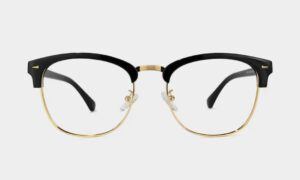In the hustle and bustle of our daily lives, our feet often bear the brunt of our activities. Whether we’re running errands, working long hours, or exploring new places, comfortable shoes can make a world of difference. Have you ever wondered why some shoes feel like walking on clouds while others leave your feet sore and tired? In this blog post, we’ll delve into the fascinating science behind comfortable shoes, exploring the factors that contribute to their design, materials, and overall ergonomic features.
The Anatomy of Comfort
Comfortable shoes are not just about cushioning; they involve a complex interplay of design elements that prioritize foot health and overall well-being. The anatomy of comfortable shoes goes beyond aesthetics, encompassing key components that contribute to a blissful walking experience.
- Cushioning Technology
At the heart of comfortable shoes lies advanced cushioning technology. Modern footwear incorporates materials like memory foam, gel inserts, and air pockets to provide optimal shock absorption. These materials adapt to the shape of your foot, distributing pressure evenly and reducing the impact on your joints.
- Arch Support
A crucial factor in the comfort equation is arch support. The arches of our feet are designed to absorb and distribute forces during movement. Shoes with proper arch support help maintain the foot’s natural alignment, preventing discomfort and fatigue. Podiatric experts often recommend shoes with varying levels of arch support based on individual foot shapes.
- Breathability
Comfort isn’t just about what’s under your foot; it’s also about the environment your foot is in. Breathable materials, such as mesh and perforated fabrics, enhance airflow, keeping your feet cool and preventing moisture buildup. This not only contributes to comfort but also helps prevent issues like blisters and odors.
- Flexibility and Flex Points
Natural foot movement requires shoes to be flexible at specific points. Understanding the biomechanics of walking, shoe designers strategically place flex points to facilitate a more natural gait. This flexibility ensures that the shoe moves with your foot, preventing stiffness and discomfort.
Materials Matter
The choice of materials plays a pivotal role in determining the comfort level of shoes. Innovations in material science have revolutionized the footwear industry, giving rise to materials that offer a perfect blend of comfort, durability, and style.
- Memory Foam
Memory foam, originally developed by NASA, has found its way into the insoles of many comfortable shoes. This viscoelastic material conforms to the shape of your foot, providing a personalized and supportive fit. Memory foam is particularly effective in alleviating pressure points, making it a favorite for those seeking all-day comfort.
- EVA (Ethylene Vinyl Acetate)
EVA is a lightweight and flexible foam commonly used in the midsoles of athletic and casual shoes. It offers excellent shock absorption and energy return, making it a go-to material for footwear designed for active lifestyles. The cushioning properties of EVA contribute significantly to the overall comfort of the shoe.
- Gel Technology
Gel inserts are strategically placed in the midsole or heel of shoes to enhance cushioning and shock absorption. This technology is especially popular in athletic and running shoes, where impact forces are higher. Gel provides a responsive and comfortable feel, catering to individuals with varying activity levels.
- Natural Materials
For those who prefer an eco-friendly option, shoes made from natural materials like leather and cork are gaining popularity. These materials allow for breathability, moisture-wicking, and a comfortable fit. Additionally, they often age gracefully, developing a unique patina over time.
Ergonomic Design
Beyond cushioning and materials, the ergonomic design of shoes plays a crucial role in ensuring comfort. Ergonomics in footwear focuses on optimizing the interaction between the human body and the product, taking into account factors like biomechanics, weight distribution, and balance.
- Toe Box Design
A spacious and well-designed toe box is essential for preventing issues such as bunions and ingrown toenails. Shoes that allow the toes to splay naturally provide a more comfortable fit and reduce the risk of foot deformities over time.
- Heel Counter
The heel counter, located at the back of the shoe, stabilizes the foot and prevents excessive movement. A well-designed heel counter is essential for maintaining proper alignment and preventing discomfort, especially during activities that involve lateral movement.
- Weight Distribution
Balancing the weight of the shoe is crucial for preventing fatigue during prolonged wear. Evenly distributed weight across the sole ensures that no specific area of the foot bears excessive pressure, contributing to a more comfortable walking experience.
- Sole Shape and Traction
The shape of the sole and the type of traction it provides are key factors in preventing slips and falls. A well-designed sole with adequate grip enhances stability, allowing for confident and comfortable movement on various surfaces.
The Role of Foot Mechanics
Understanding the mechanics of how we walk and stand is fundamental to designing shoes that promote comfort and support. Here are some key aspects of foot mechanics that influence the design of comfortable footwear:
- Pronation and Supination
Pronation (inward rolling of the foot) and supination (outward rolling) are natural movements that occur during walking. Shoes with features that accommodate these movements, such as stability elements and varying levels of arch support, contribute to a more comfortable and biomechanically sound gait.
- Impact Forces
The impact forces generated with each step can lead to discomfort and fatigue if not properly managed. Cushioning materials and shock-absorbing technologies play a crucial role in minimizing the impact forces transmitted through the foot and lower extremities.
- Biomechanical Assessments
Some individuals may have unique biomechanical characteristics that require specialized footwear. Biomechanical assessments, often conducted by podiatrists or footwear specialists, can help identify specific needs and guide the selection of shoes tailored to individual foot shapes and conditions.
Conclusion
Walking on clouds is not just a poetic expression; it’s a tangible experience made possible by the meticulous science behind comfortable shoes. From advanced cushioning technologies to carefully selected materials and ergonomic designs, the footwear industry continues to innovate, prioritizing the well-being of our feet. As consumers, understanding the elements that contribute to comfort empowers us to make informed choices, ensuring that every step we take is a step towards comfort, support, and overall foot health. So, the next time you slip into a pair of exceptionally comfortable shoes, know that it’s not magic but the result of a harmonious blend of science and design working together to make your walking experience truly heavenly.



































